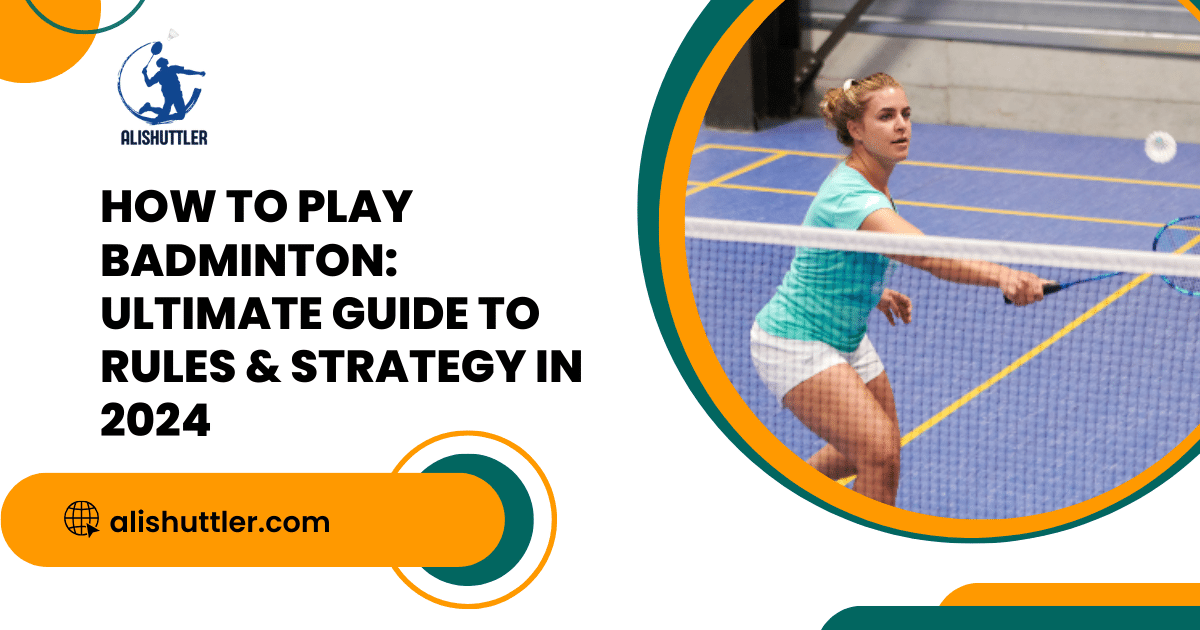Understanding the rules of badminton can be the difference between a good game and a great one. From serving regulations to court boundaries, knowing these guidelines ensures fair play and enhances your gameplay. While some badminton rules are straightforward, others might surprise you with their complexity. By diving into the specifics, players can avoid penalties and enjoy a more competitive match.
Key Takeaways
- Know the Basics: Start with the fundamental rules to build a solid foundation for enjoyable gameplay.
- Strategize Your Points: Use tactics like placement, speed, and deception to outplay your opponent.
- Master the Serve: Proper serving techniques control the game’s pace and pressure your opponent.
- Stay Within Boundaries: Understanding court dimensions helps you position yourself effectively.
- Respect the Shuttlecock: Its unique design impacts the game, so handle it properly for better performance.
- Switch Ends Wisely: Strategic end-switching can influence your game, considering factors like drift and visibility.
Starting with Badminton Basics

Types of Matches
There are two main types of matches: singles and doubles. Singles involve one player per side, while doubles feature teams of two.
Court Dimensions
- Singles: 17 feet wide and 44 feet long.
- Doubles: 20 feet wide and 44 feet long.
Understanding these differences helps adapt your gameplay. The wider court in doubles requires efficient coverage.
Equipment
Essential gear includes a racket, shuttlecocks, and proper footwear. Good equipment can significantly improve your performance on the court.
Understanding the Scoring System
Match Format
Matches follow a best-of-three-games format, with each game played to 21 points with a two-point margin needed to win.
Points System
Points are scored when the shuttlecock lands within the opponent’s court boundaries. Precision and strategic placement are crucial.
Winning by Two Clear Points
If the score ties at 20-20, the game continues until one side gains a two-point lead, ensuring dominance is rewarded.
Winning Points Strategically

Shot Placement
Strategic shot placement can win points by forcing opponents to move and creating openings. Use a mix of clears and drop shots to keep them off balance.
Avoiding Mistakes
Avoid predictability in your shots. Mixing up smashes, drops, clears, and slices can prevent your opponent from anticipating your next move.
Serving Badminton Rules Simplified
Correct Technique
Serve below the waist, hitting the shuttlecock diagonally over the net. Proper technique ensures control and precision.
Height and Direction
The serve should not go higher than the server’s waist and must land within the diagonal court lines. Consistent practice helps maintain accuracy.
Singles vs. Doubles Matches
In singles, serve diagonally across the court. In doubles, each side takes turns serving from their respective service courts.
Exploring Court Dimensions
Standard Dimensions
A standard court is 44 feet long and 17 feet wide for singles, with specific boundaries for doubles. These dimensions impact gameplay and positioning.
Importance of Positioning
Proper positioning helps you cover the court effectively, anticipate opponent moves, and maintain control during rallies.
Shuttlecock Essentials
Characteristics
A shuttlecock has 16 feathers on a cork base, weighing between 4.74 and 5.50 grams. Its design influences flight and control.
Gameplay Role
The shuttlecock dictates the game’s pace, direction, and intensity. Mastering its movement is key to success.
Speed and Trajectory Impact
Shuttlecock speed affects rally dynamics. Faster shuttles demand quick reflexes, while trajectory influences offensive and defensive plays.
Switching Ends Explained

Game Progress
Players switch ends when the total score reaches odd numbers like 1, 3, or 5. This rule accounts for environmental factors like wind or lighting.
Performance Impact
Switching ends can disrupt rhythm and require quick adaptation to new conditions, impacting strategy and performance.
Advanced Rules and Regulations
Player Conduct
Maintain proper conduct, respect opponents and officials, and avoid unsportsmanlike behavior to prevent penalties or disqualification.
Movement and Shot Execution
Efficient footwork and accurate shot execution are crucial. Understanding these rules helps in competitive matches.
Penalties and Disqualification
Certain actions can lead to penalties or disqualification, such as net touches or stepping into the opponent’s court. Knowing these rules helps avoid costly mistakes.
Summary of Badminton Rules
By understanding the basics, scoring systems, strategic point-winning tactics, serving rules, court dimensions, shuttlecock essentials, switching ends, and advanced regulations, you can enhance your badminton gameplay. Regular practice and adherence to these rules ensure fair and enjoyable matches. Now, it’s time to hit the court and put this knowledge into action!
Frequently Asked Questions
What are the basic rules of badminton?
Players hit the shuttlecock over a net, with serving, scoring points, and court dimensions being key components.
How is scoring done in badminton?
Using a rally-point system, players earn points by winning rallies. Matches are typically best-of-three games for 21 points.
Can you explain the serving rules in badminton?
Serves must be below the waist, diagonal, and within service courts, with the server’s feet stationary until contact.
What are some strategic ways to win points in badminton?
Exploit opponent weaknesses, use deceptive shots, vary placements, and anticipate opponent movements.
What are some advanced rules and regulations in badminton?
Include let calls, fault judgments, player positioning, and adherence to tournament regulations for competitive play.



